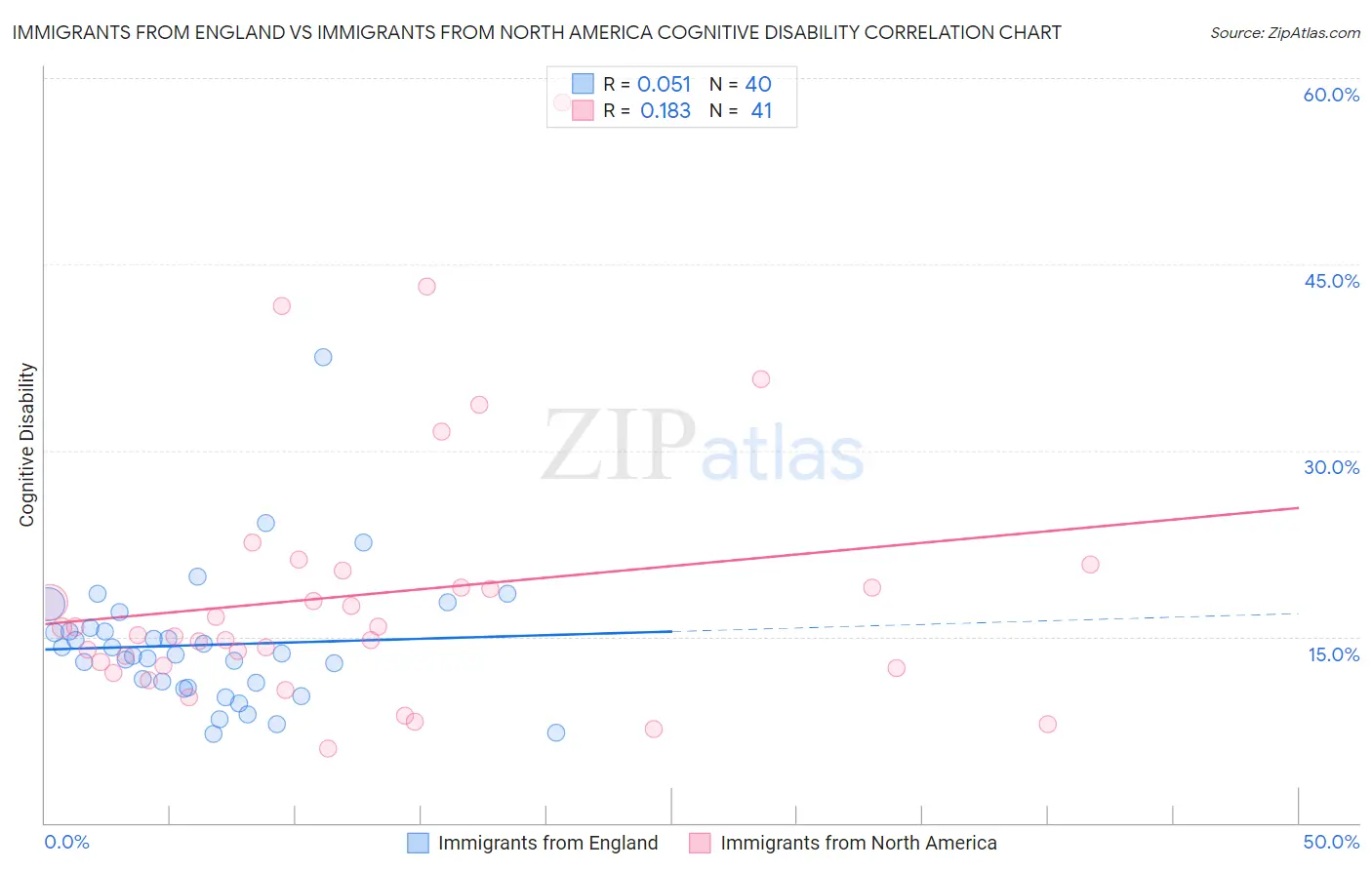Immigrants from England vs Immigrants from North America Cognitive Disability
COMPARE
Immigrants from England
Immigrants from North America
Cognitive Disability
Cognitive Disability Comparison
Immigrants from England
Immigrants from North America
16.6%
COGNITIVE DISABILITY
99.6/ 100
METRIC RATING
61st/ 347
METRIC RANK
16.5%
COGNITIVE DISABILITY
99.8/ 100
METRIC RATING
48th/ 347
METRIC RANK
Immigrants from England vs Immigrants from North America Cognitive Disability Correlation Chart
The statistical analysis conducted on geographies consisting of 391,893,945 people shows a slight positive correlation between the proportion of Immigrants from England and percentage of population with cognitive disability in the United States with a correlation coefficient (R) of 0.051 and weighted average of 16.6%. Similarly, the statistical analysis conducted on geographies consisting of 462,435,369 people shows a poor positive correlation between the proportion of Immigrants from North America and percentage of population with cognitive disability in the United States with a correlation coefficient (R) of 0.183 and weighted average of 16.5%, a difference of 0.57%.

Cognitive Disability Correlation Summary
| Measurement | Immigrants from England | Immigrants from North America |
| Minimum | 7.2% | 6.0% |
| Maximum | 37.5% | 58.1% |
| Range | 30.3% | 52.1% |
| Mean | 14.3% | 18.4% |
| Median | 13.6% | 15.1% |
| Interquartile 25% (IQ1) | 11.1% | 12.6% |
| Interquartile 75% (IQ3) | 15.6% | 19.7% |
| Interquartile Range (IQR) | 4.5% | 7.1% |
| Standard Deviation (Sample) | 5.4% | 10.7% |
| Standard Deviation (Population) | 5.3% | 10.5% |
Demographics Similar to Immigrants from England and Immigrants from North America by Cognitive Disability
In terms of cognitive disability, the demographic groups most similar to Immigrants from England are Czechoslovakian (16.6%, a difference of 0.030%), Argentinean (16.6%, a difference of 0.050%), Romanian (16.6%, a difference of 0.060%), Pennsylvania German (16.6%, a difference of 0.070%), and Immigrants from Peru (16.6%, a difference of 0.070%). Similarly, the demographic groups most similar to Immigrants from North America are Immigrants from Italy (16.5%, a difference of 0.0%), Immigrants from Colombia (16.5%, a difference of 0.030%), Immigrants from Europe (16.5%, a difference of 0.040%), Iranian (16.5%, a difference of 0.040%), and Macedonian (16.5%, a difference of 0.050%).
| Demographics | Rating | Rank | Cognitive Disability |
| Macedonians | 99.8 /100 | #44 | Exceptional 16.5% |
| Immigrants | Europe | 99.8 /100 | #45 | Exceptional 16.5% |
| Immigrants | Colombia | 99.8 /100 | #46 | Exceptional 16.5% |
| Immigrants | Italy | 99.8 /100 | #47 | Exceptional 16.5% |
| Immigrants | North America | 99.8 /100 | #48 | Exceptional 16.5% |
| Iranians | 99.8 /100 | #49 | Exceptional 16.5% |
| Norwegians | 99.8 /100 | #50 | Exceptional 16.5% |
| Immigrants | Korea | 99.8 /100 | #51 | Exceptional 16.5% |
| Soviet Union | 99.8 /100 | #52 | Exceptional 16.5% |
| Swedes | 99.8 /100 | #53 | Exceptional 16.5% |
| Immigrants | Iran | 99.8 /100 | #54 | Exceptional 16.5% |
| Immigrants | Venezuela | 99.7 /100 | #55 | Exceptional 16.5% |
| Austrians | 99.7 /100 | #56 | Exceptional 16.6% |
| Bhutanese | 99.7 /100 | #57 | Exceptional 16.6% |
| Pennsylvania Germans | 99.7 /100 | #58 | Exceptional 16.6% |
| Immigrants | Peru | 99.7 /100 | #59 | Exceptional 16.6% |
| Romanians | 99.7 /100 | #60 | Exceptional 16.6% |
| Immigrants | England | 99.6 /100 | #61 | Exceptional 16.6% |
| Czechoslovakians | 99.6 /100 | #62 | Exceptional 16.6% |
| Argentineans | 99.6 /100 | #63 | Exceptional 16.6% |
| Venezuelans | 99.6 /100 | #64 | Exceptional 16.6% |